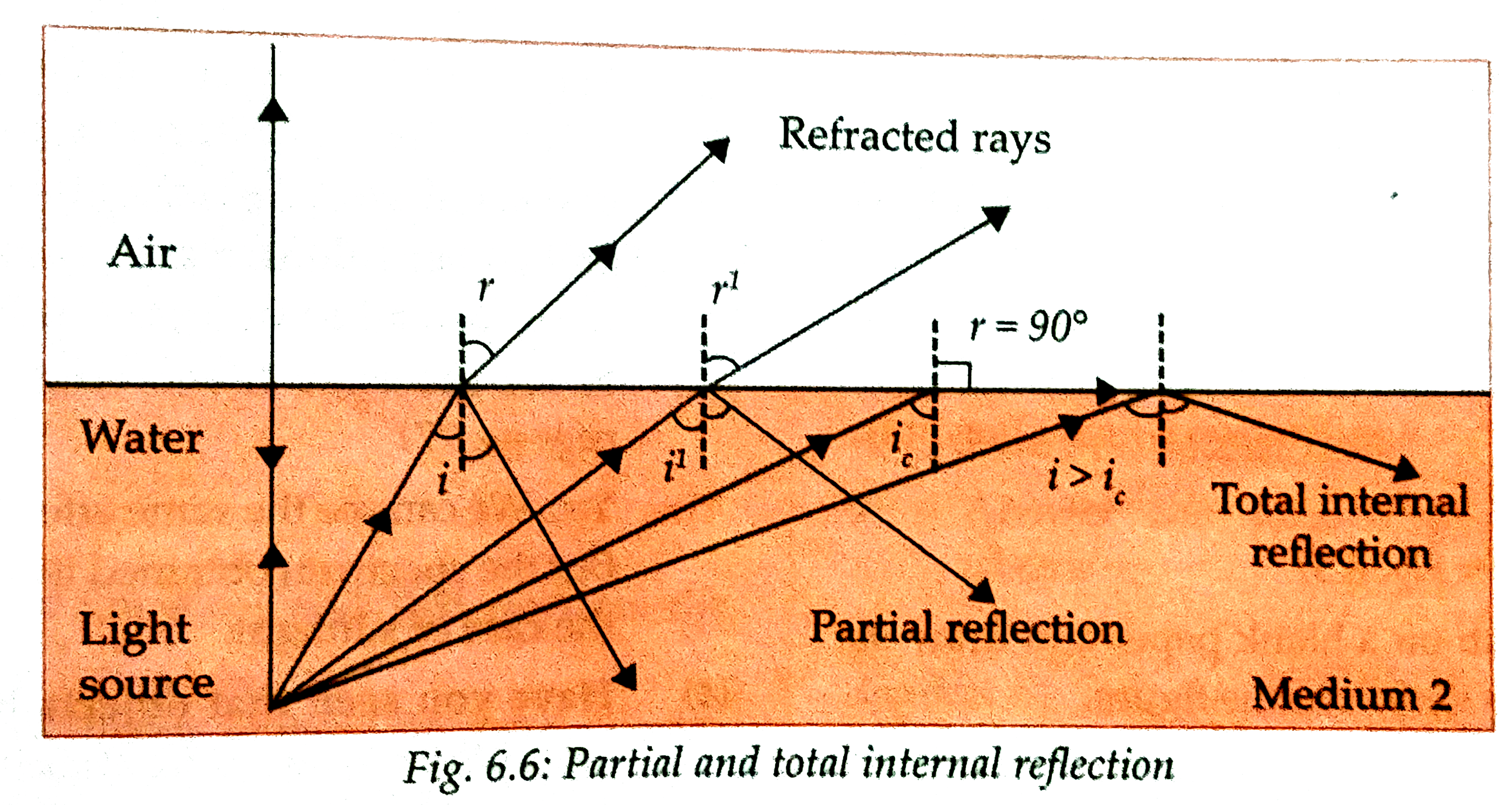Partial reflection and Total internal reflection.Solution in Tamil
Topper's Solved these Questions
- REFRACTION OF LIGHT BOOK - CHETAN PUBLICATIONCHAPTER - REFRACTION OF LIGHT EXERCISE - Paragraph questions
8 Videos
- REFRACTION OF LIGHT BOOK - CHETAN PUBLICATIONCHAPTER - REFRACTION OF LIGHT EXERCISE - Activity Activity/Application based Questions
12 Videos
- REFRACTION OF LIGHT BOOK - CHETAN PUBLICATIONCHAPTER - REFRACTION OF LIGHT EXERCISE - Complete the following statements and explain
5 Videos
- MODEL ACTIVITY SHEET BOOK - CHETAN PUBLICATIONCHAPTER - MODEL ACTIVITY SHEET EXERCISE - SOLVE THE FOLLOWING QUESTIONS : (ANY 1)
9 Videos
- SOCIAL HEALTH BOOK - CHETAN PUBLICATIONCHAPTER - SOCIAL HEALTH EXERCISE - ASSIGNMENT - 9
12 Videos
Similar Questions
Read the passage and Answer the following question:
In, vacuum the velocity of light radiation with different wavelength is the same. But in a material medium, the velocity of different colour radiations is not the same and they travel with different paths. Due to this, the refractive index of the medium is different for different colours. If white beam of light is incident on a glass prism, the angle of refraction for different colours is different. When Sunlight is incident on a refracting surface, then it gets split into seven coloured spectrum and emerges out. The splitting of light into its component colours is called dispersion.
Sir Isaac Newton was the first to use a glass prism to obtain the spectrum of Sunlight. A glass prism is transparent medium bounded by two plane surfaces inclined at an angle.
When white light is dispersed into seven colours by a prism, different colours of light bend through different angles with respect to incident ray. Out of these seven colours, red light bends the least, while violet light bends the most. So, the rays of each colour emerge along different paths and becomes distinct. Hence, we get spectrum of seven - different colours.
Q. How do emergent rays appear ?
View Solution(i) Keep a glass slab on a blank paper and draw its outline PQRS as shown in the figure.
(ii) Draw an inclined straight line on the side of PQ so that it intersect PQ at N. Pierce two pins vertically at two points A and B along the line.
(iii) Look at the pins A and B from the opposite side of the slab and pierce pins C and D vertically so that the images of A and B are in line with C and D.
(iv) Now remove the chip and the pins and draw a straight line going through points C and D so that it intersects SR at M.
(v) Join points M and N. Observe the incident ray AN and emergent ray MD.
Questions:
(a) What is your observation about the emergent ray and incident ray ?
View SolutionThe refractive index of a medium is dependent on the __________ .
View SolutionMost of the children of a school in a village bring paratha and pickle in their tiffin in school. These children do not shares their food with anyone. Some children bring chapati, fruits, salad , curd vegetable. Those children share their food with each other .
Which acid is present in curd and vinegar used in pickles ?
View SolutionFill in the blanks:
Laughter club is remedy to drive away………………
View SolutionConditions Of Total Internal Reflection
View SolutionTotal Internal Reflection
View SolutionExplain partial reflection, critical angle and total internal reflection with the help of a neat labelled diagram.
View SolutionPartial reflection and Total internal reflection.
View SolutionTotal Internal Reflection
View SolutionWhat is total internal reflection of light ? What are conditions for total internal reflection ?
View SolutionTotal Internal Reflection
View SolutionTotal internal reflection
View SolutionConditions Of Total Internal Reflection
View SolutionExplain internal reflection and total internal reflection.
View SolutionWith the help of a neat labelled diagram, explain partial reflection, critical angle and total internal reflection.
View Solution

